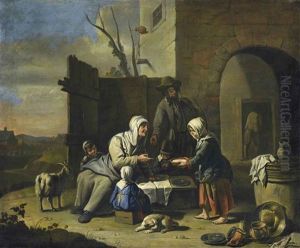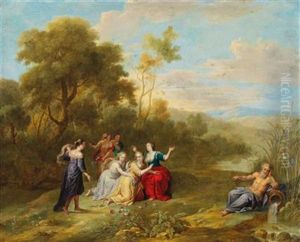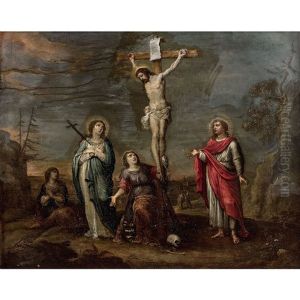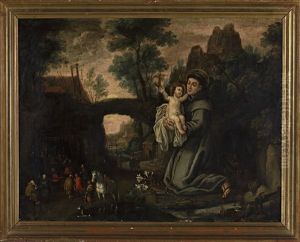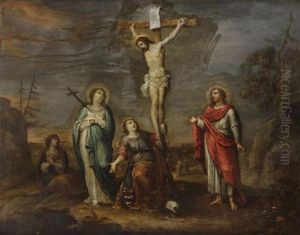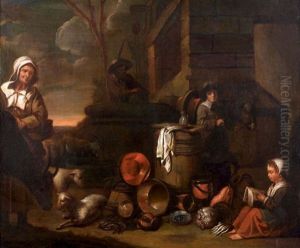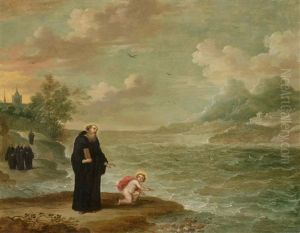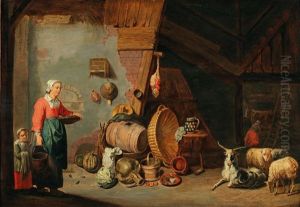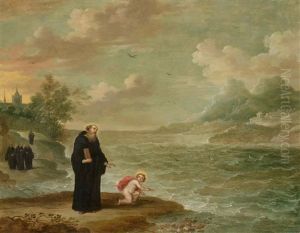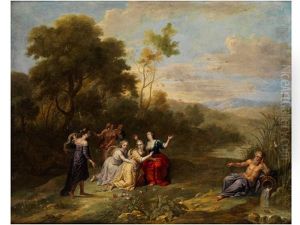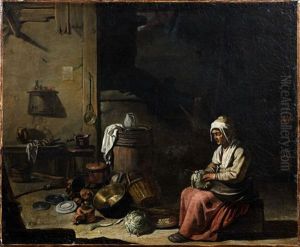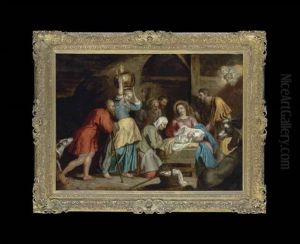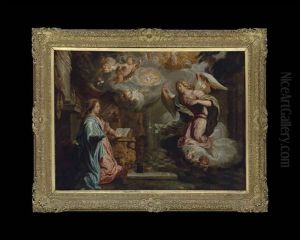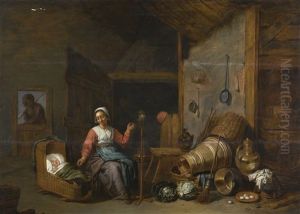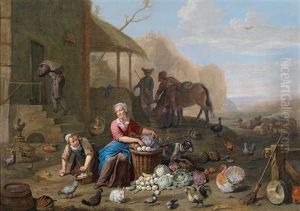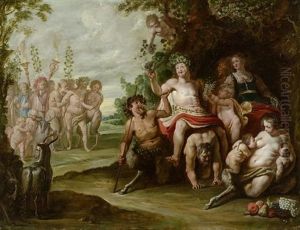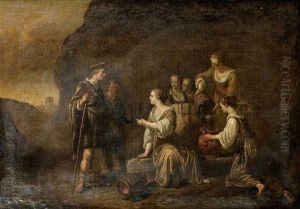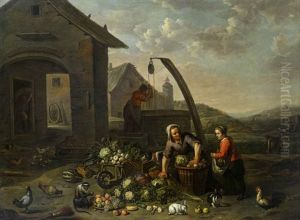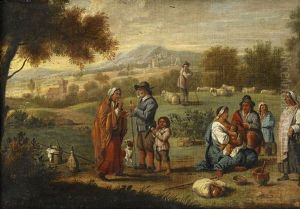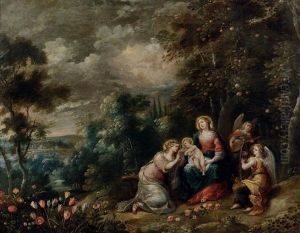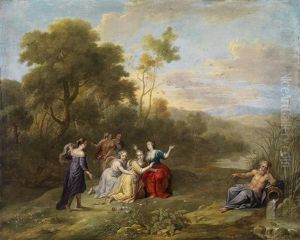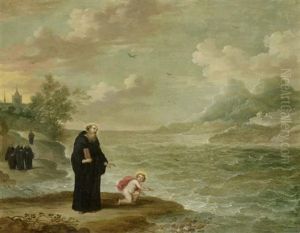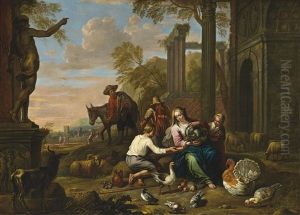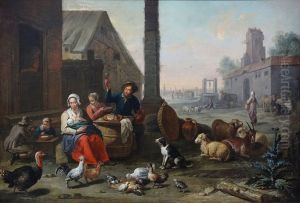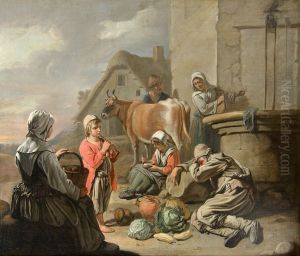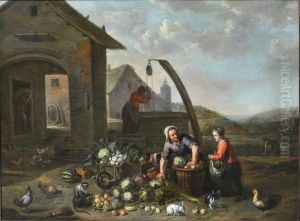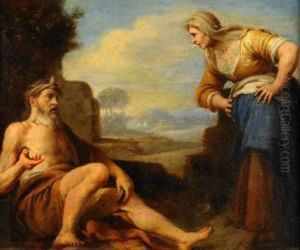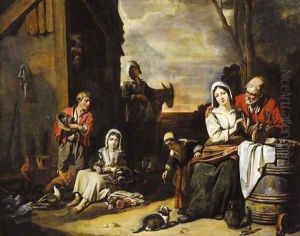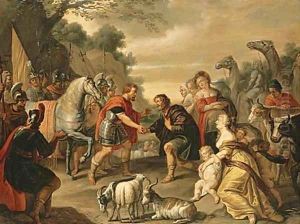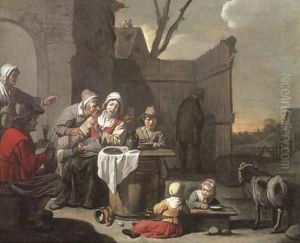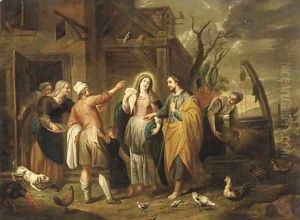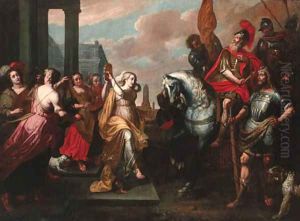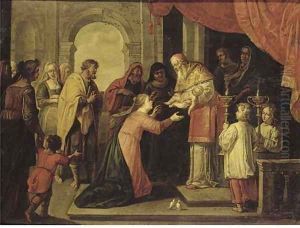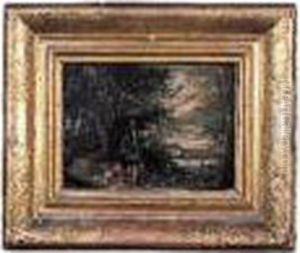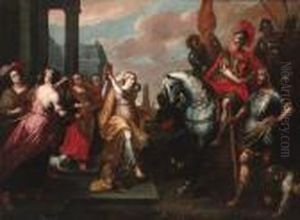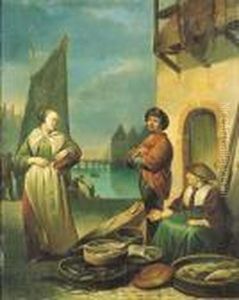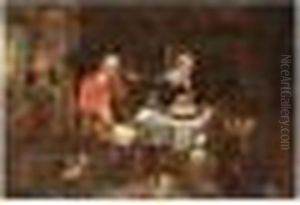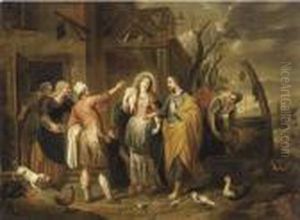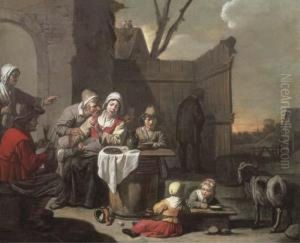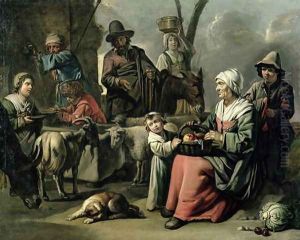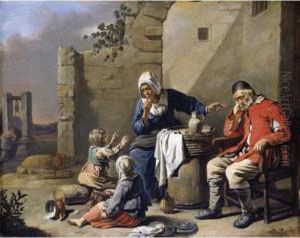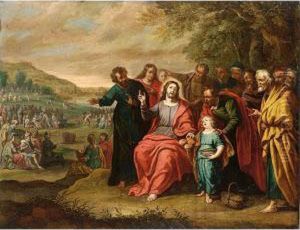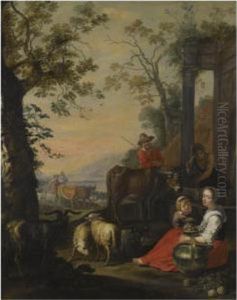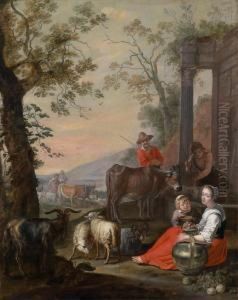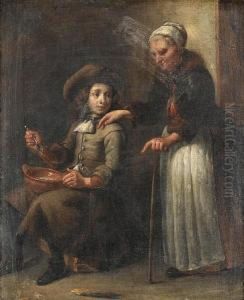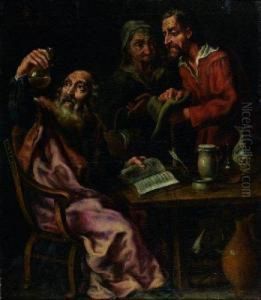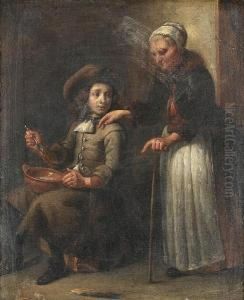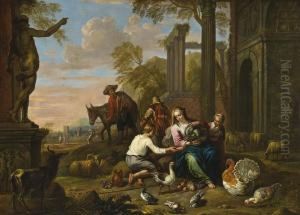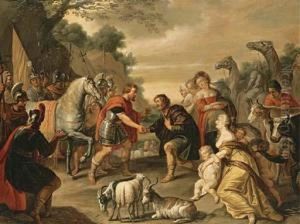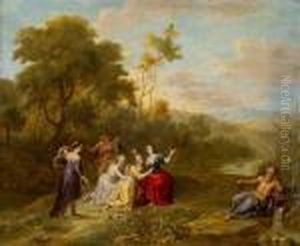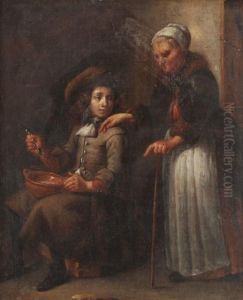Abraham Willemsens Paintings
Abraham Willemsens was a Flemish painter who is known for his works in the Baroque style. While the exact year of his birth is not definitively known, it is believed that he was born around 1610 in Antwerp, which at the time was part of the Spanish Netherlands. Willemsens was primarily a painter of landscapes and genre scenes, often incorporating lively human figures and animals into his compositions.
Willemsens’s style was influenced by the great Flemish masters of his time, including Peter Paul Rubens and Anthony van Dyck, although he developed his own distinctive approach to painting. Willemsens's works are characterized by a keen attention to detail, a rich color palette, and dynamic compositions that bring his scenes to life.
Despite his talent, Abraham Willemsens is not as well-known as some of his contemporaries. His life and career were somewhat overshadowed by the more dominant figures in Flemish art during the 17th century. Nevertheless, he enjoyed a successful career as an artist, and his paintings were sought after by patrons during his lifetime.
Willemsens was active in Antwerp's Guild of Saint Luke, a common practice for artists of the time, which allowed them to practice their craft and sell their works. He became a master in the Guild in 1637, indicating that he was recognized by his peers for his artistic skills.
The artist's death is recorded in 1672, and he left behind a body of work that continues to be appreciated by art historians and collectors. While not as prolific or famous as some of his peers, Willemsens’s contribution to Flemish art provides a valuable insight into the cultural and artistic landscape of the Baroque period in the Low Countries. Today, his works can be found in various art collections and museums, offering a glimpse into the rich artistic heritage of 17th-century Flanders.
